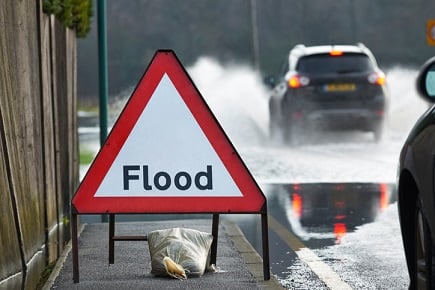

FM Global’s Lyndon Broad reveals how businesses can mitigate weather-related risks in the midst of flood season
Natural disasters have wreaked havoc on the lives and businesses of many Australians over the past few decades. Queenslanders in particular are continuing to recover from Cyclone Debbie, which caused billions of dollars in 2017.
Globally, the costs associated with extreme weather – including flooding, hurricanes and other events – are rising sharply. Moody’s Estimates puts the cost from last year’s hurricanes Irma and Harvey to cities such as Houston and Miami at between $US150bn and US$200bn, while Hurricane Maria is estimated to have caused insured losses of between US$40bn and US$80bn, primarily in Puerto Rico.
So how can your clients protect themselves as we face another flood season in Australia? And, more broadly, how can their businesses reduce their exposure to extreme weather events in Australia and globally?
The key is to be well prepared. That means understanding where and how a business is exposed and taking steps to mitigate the risk. At FM Global, we’ve developed an emergency checklist to help businesses facing immediate or near-term risks from flooding. The checklist features simple, practical steps to help clients reduce damage from a flood and its impact on business continuity. These steps include:
An emergency checklist can help a business navigate its way safely through a flood and be developed into a more comprehensive Flood Emergency Response Plan [FERP]. FM Global’s full checklist of pre- and post-flood items and FERP are available on our website. The FERP should be integrated with broader business continuity and disaster recovery planning to minimise disruption to production and, most importantly, to customers.
FM Global has also developed an interactive flood map so businesses can immediately identify whether they (or their supply-chain partners) are operating in zones prone to inundation. This map can enable executives and risk managers to evaluate and take measures to address the hazard presented by flooding. For example, it helps facilitate planning to relocate plants, facilities and offices out of flood-prone areas.
Of course, a business cannot properly mitigate flood-related risks unless its planning extends beyond its own facilities and operations.
Businesses must be aware of and plan for the risk flooding can present to their supply chain. The globalised nature of many modern supply chains means fl ooding that affects suppliers in distant locations can cause severe knock-on effects to a business. Consequently, a flood risk assessment should account for events that might compromise production or operations of just one participant in the supply chain. This means identifying options for sourcing alternative services or supplies in the event of disruption.
A business might also choose to consider providing flood risk assessment and management assistance to all supply-chain participants to further mitigate risk.
By taking immediate action to minimise the risk and impact of a flood, businesses can greatly reduce potentially catastrophic effects and position themselves and their supply-chain partners for a prosperous feature.

